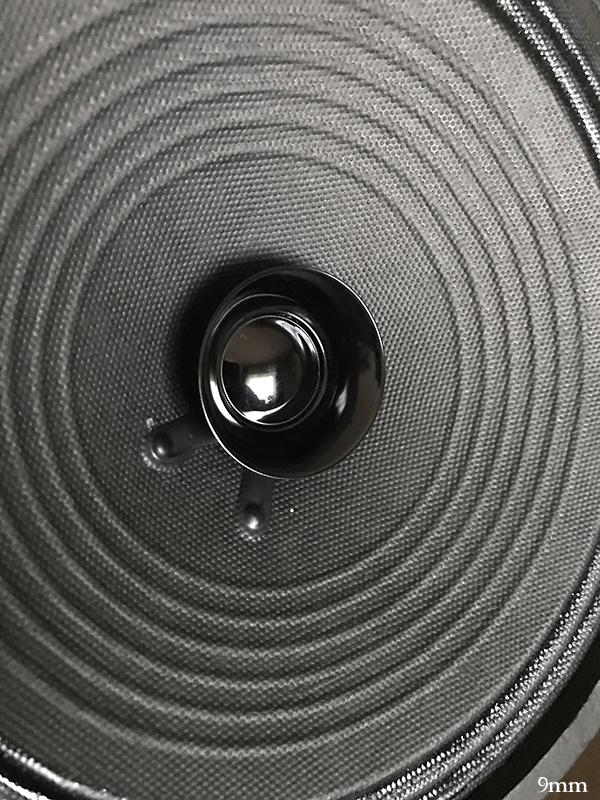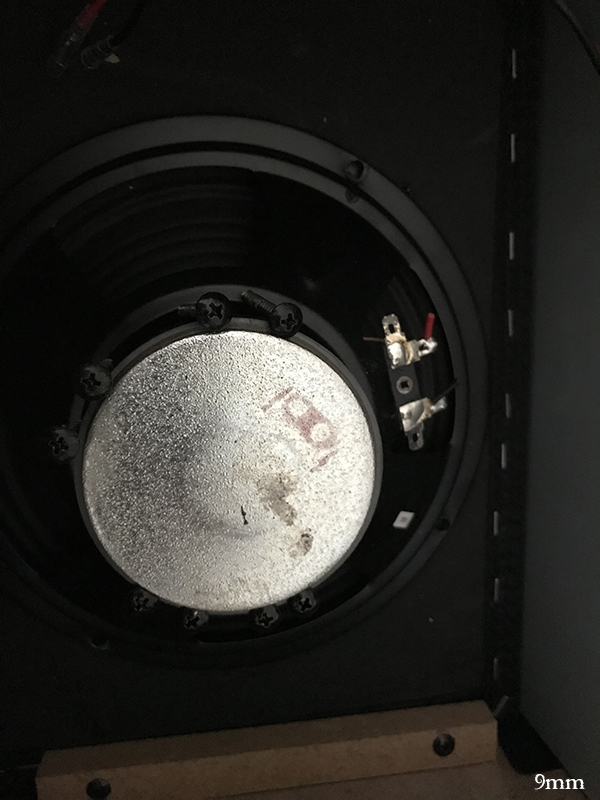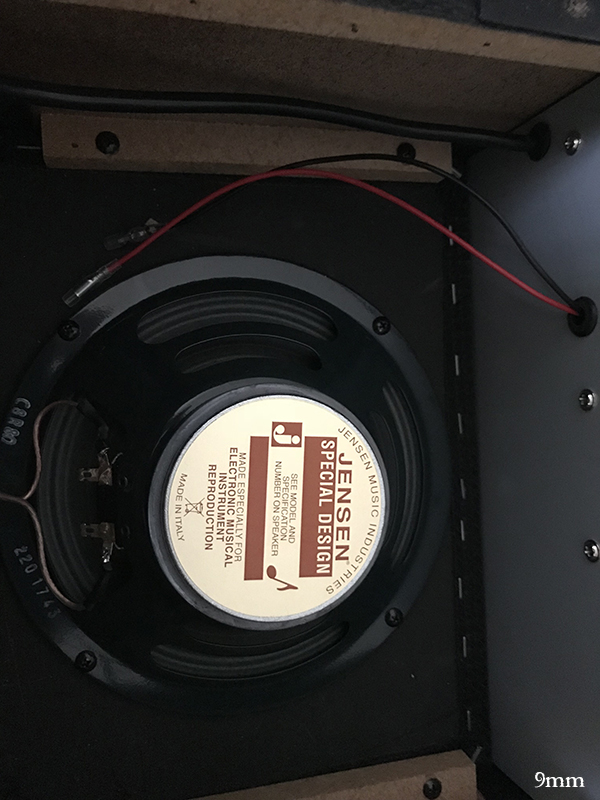I have a small practice combo which is cheap but sounds ok, one of the main problems I had with it is that it is too loud for my neighbours. I mean we can hear each other farting so a loud guitar combo is a big NO-NO. Regarding the sound, it was a bit on the bright side, not bad, but for a guitar sometimes was a bit too bright - at least for my taste. Other than the brightnes I can't complain too much about the sound and for the price I paid, I was happy that it had a speaker inside.
The combo I modified is a Soundking AK20-RA, it has 2 channels - clean and overdrive, EQ, presence, reverb, and for just 79,99 EUR
on Amazon it has a FX LOOP. This was actually one of the reasons I purchased it, because for the FX LOOP feature I usually have to search up in the ranks of 2-300 EUR or even more. They say that it is a 60W but only at peak can reach 60 Watts and not at the speaker level. So it is actually a 20W combo, a loud one with 8" speaker and 8 Ohm. I could not find this info anywhere so I cracked open the case and measured the impedance myself - old school style.
Read here how to Swap speakers in a guitar combo, what to look for and steps. It is very easy anyway, a no brainer, and the most important part - when the combo is cheap you do it like you did it already 1000 times before, because it doesn't matter if you break something.

So, the original speaker was some sort of full range speaker with a poly-something cone for high tones. As you can see in the picture (on the right side) it is not so shabby to start with, looks quite neat made, the only thing I can complain is that it is good for music but not for guitar, especially when you play the high notes - at that point it starts to sound brittle and a bit on the crappy side.
As the speaker was unmarked, I had to guess that it is 20W rated if we take the amp name and the fact that the next model Soundking AK30-A has a rating of 30W RMS and a 75W Peak. Having already measured the impedance (8.3 Ohm), knowing the power and the size, I was quick on the market for a loudspeaker with a good value for money. After all, it does not worth to put a 200 EUR speaker in a 79 EUR combo, the sound will not be heaven anyways when compared with a 40 EUR speaker, which in turn is for sure 10 times better than the stock one.
BUT to be sure about the approximate RMS power of your speaker, you can do the following:
Play some music over your combo input / aux, so that you have signal sent to the loudspeaker
Measure the voltage with a voltmeter at the speaker
Measure the amperage at the speaker
Multiply your amperage and voltage and you should get your RMS wattage.
How do I got to this? Elementary physics says that 1W = 1V * 1A

As you can see on the left side, when you have so much information about the speaker, you enjoy some empty speaker plates, you have to go back to the basics and start measure parameters, and make some logic deductions (if is possible).
I decided on Jensen C8R 8 Ohm. Why Jensen you may ask, C8R is from the vintage ceramic series, and it was popular with Fender amps in the 60s, also it sounds sweet for blues but goes also well for metal, and they sound good at loud volumes so for me a no-brainer. (except the loud part) Not to mention that it comes around 42 EUR, so is not cheap but not expensive. It has a 25W rated power with a 50W musical power, so it can take the 60W peaks from the amp (if they are 60W anyway).
How to connect? Yeah this one is easy, BUT I got it different right now. I know the theory of music gizmos says that you solder everything, using the highest grade wire in the shortest length possible. In this way you will not lose 0.0000000001 dB and ad some minor resistance due to some centimeters of cable here and there.
What I did? I used ... now the audiophiles and amp fanatics will commit suicide ... motorcycle connectors, I got a bag of them from working on my LED lights so I used them, I prefer this than to solder 10 times if I want to add something, I find it more practical for future replacements. And as for the wire, I used copper wire for speakers.
You don't have to do like me, just do like the amp priests are preaching, solder your connections.
How does it sound? Well is not quite day and night difference, since it was not so bad as a starter. But it has a different sound, this comes with the territory (speaker) anyway, but because is a normal speaker designed for instruments it pleases my inner ear a bit more. Or is just the psychological effect that it should sound better because the stock one was crap. For the high tones I see an improvement, it is loud, it sounds good, works as expected ... and they lived happily ever after.

First part - swapping the speaker - being finished, the second part comes into play. I still have an issue ... loud volumes at less than 1/4th of volume knob. While one can say that if is loud enough even at low levels, who cares if the volume knob is at 3 or at 70, I would argue that even if is a solid state amp, in order to get it sound good (take all the goodness from the guitar signal) you should still crank it a bit more than few degrees.
Enter the world of attenuators! There are many types - active, passive, reactive, non-reactive, expensive, mega-expensive, you better rent a practice place than to buy one. Since I am a bedroom warrior once in a full moon, I like to do things on my own rather than pay someone $$$$$$ for $ materials inside.
So, long story short, the simplest form of attenuator is ... thank you arduino times ... the voltage divider. You may ask ..."the what?!? Voltage? What it has to do with the music box?" Well ... as stated before 1W = 1V * 1A, so if I drop the voltage I reduce the power at the speaker.
The voltage divider is also the simplest form of the well known L-PAD attenuator. It has some pros and cons, like anything in this world. The down side is that it is not flexible, meaning that is fixed, so in order to have different attenuation levels, you would need to have more voltage dividers and with a switch to activate / deactivate them.
The advantage is that it works also as a filter, thus reducing the noise, the first thing that is reduced is the noise that comes from the amp, and this is what I find to be the big advantage, cutting a bit on the noise level while reducing the power at the speaker. Another advantage is that, if calculated right, it maintains the load unchanged, so the amp will still "see" a 8 Ohm load, the speaker is still 8 Ohm so no strange behaviour and cuts at some frequencies. In short it can be said that it keeps the load, filters some noise and still offers the range it should have.
Some amp and sound fascists (the ones that can hear a teardrop smiling) might argue that the loudspeaker is a reactive load, so is not constant and putting a non-reactive load in front of it will cut constantly with whatever load you put there. While I agree with this, having the constant load in front of the speaker will not render the speaker to be non-reactive, and while the speaker is changing the impedance due to the signal it receives, the overall impedance of the attenuator - speaker will fluctuate too, which can generate some random frequencies filtering. BUT this happens for nano or milliseconds and the nuances are very hard to notice, this happens also when you have two speakers in series, since no speaker is 100% identical with other, so you will still end with this kind of behaviour on the second speaker in series - since it is influenced by the impedance of the first one. But this is a subject of many hours of talking for nothing and depends what you want to achieve - if you are out singing you will never notice that it has a 1dB attenuator. If you want to do lab work studying the wave form of the sound, you will notice here and there some non audible differences.
Me? I play anyway with distortion so it really does not feel cutting frequencies at all, but maybe I do not hear the unicorns around us too. So I decided a 6dB reduction is a good start, is barely noticeable in volume, cuts the noise and allows a bit more on the volume knob. For a 6dB attenuation, according to the math I need a 8 Ohm resistor in parallel with the speaker and a 4 Ohm in series, but not any resistor you would use in a PCB, you need high wattage wire wound resistors, preferably with a heat sink.

As it can be seen in the picture I used two 50W aluminium resistor, since they need to dissipate a maximum of 10W, so is enough room for the cheap chinese to accommodate some peaks too. And the advantage is that they are dirt cheap if you wait like two weeks to come from China.
After building the entire voltage divider, was the test time - with and without it. Sounds good, it stays there all the time, since the attenuation is not very steep and tames a bit the overall sound. Next step is to build a second divider and use a switch to enable / disable it.
One thing to check though, if you work at the wattage limit - play for 15 - 30 minutes at a volume you would usually play, or even a bit louder and check the temperature of the resistors. If they are lukewarm or warm then is ok. If they are hot maybe you should exchange them with higher wattage ones.
In conclusion - Jensen C8R8 makes full justice to the Soundking AK20-RA combo, it sounds quite good, and with the basic attenuator it sounds even better since it cuts all the noise from guitar and amp. With 130 EUR having a guitar combo with reverb plus EQ, 2 channels and FX LOOP makes sense when the first combo with this specs is 100 EUR more, and I bet that the speaker is not better than the Jensen, probably more on the stock side of the Soundking.
I heard the theory that you can buy awesome garbage ... ahem ... used stuff from ebay at 200 EUR, brand name with 1000+ hours, that it is better than the cheapos I play with. But the cheapo can have a bigger life expectancy than a 1000+ hours worked amp, at a smaller price. Plus it sounds more ..... custom.
I would not take a Fender or a Marshall, where they somehow worked that the cheap crap speaker they throw in sounds the way a Fender would / should .... and just throw some other speaker to create a completely different sound. But I would take a higher end Marshall and keep it as it is, with the good and the bad. I have seen many posts of guys taking out speakers form Fender combos and replacing with whatever, but then you do not have that Fender sound even if the original speaker was crap, they worked all electronics around that crap speaker to sound like a higher-end Fender.
Have fun experimenting on the cheap ones. I would do some things to my Marshall too, but first I need to find a speaker to make justice to the Marshall sound.